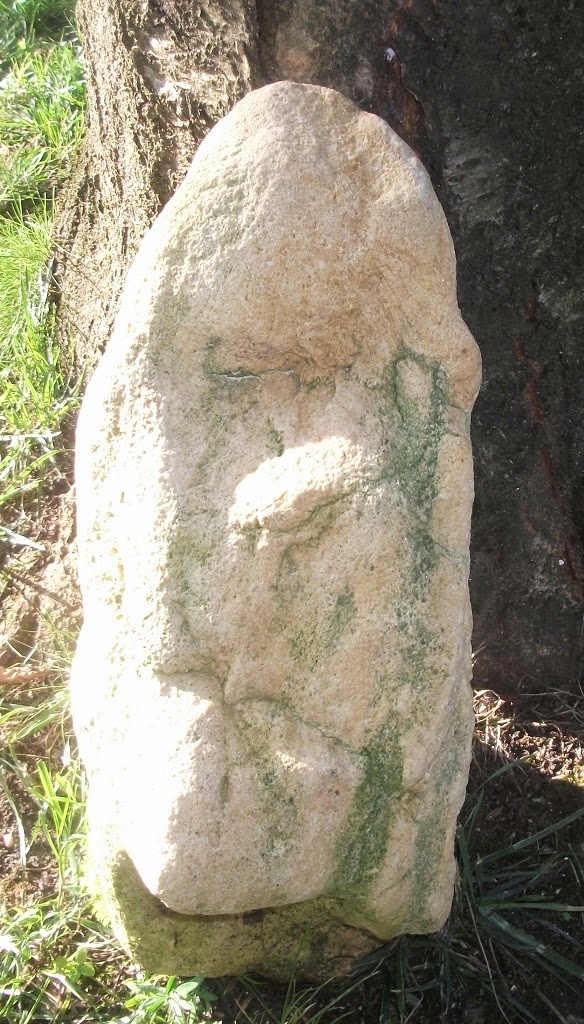A simple flying bird figure (wings on the down-stroke), Vanport chert, Licking County, Ohio
Subtle human facial profile facing left
Reverse side of the bird figure
Human facial profile facing right
The exact tip of the human facial profile's nose, from both sides of the stone, has two manufactured divots in the flint presumably to serve as nostrils. This topic has been covered in several
postings on this blog, including this one. This detail helps confirm status of an intended bird sculpture here with human imagery on its "tail."
There are
several flying bird figures incorporating human imagery which have
been featured on this blog.
It is quite possible birds were thought of as psychopomps, or "soul escorts," into birth and life and/or death and the afterlife, and this may help explain some human and bird combination stone figures.
Flying bird right profile. These bird figures were found in the same area. They do not have any human imagery but provide a bird figure archaeological context.
Side 2
In another orientation the flying bird form becomes a sitting bird. The bird's back is covered with quartz crystals. The bird is standing on its own design.
Side 1 and 2
Even at a chert quarry, limestone is not immune from use to make a bird figure. This is a very unique bird in that it is depicted as flying (beak pointing) to the right on both sides. Both sides are highly related to each other in form.
Limestone and flint art objects have been completely missed, or forsaken, by Archaeology Officialdom. This needs to change because they are prolific and can tell us much about our past and future.
With scale
A hammerstone and a unifacial blade found among the bird artifacts
(left) This is an example of another human facial profile, also facing right, which has been identified by
David Boies of Austin, Texas, and was covered in an earlier posting. The bird form is not visible in this perspective but may be seen at the link. The Flint Ridge artifact is pictured at right. These two artifacts were found at locations 1095 miles apart (1762km).





































%2B(1).jpg)










